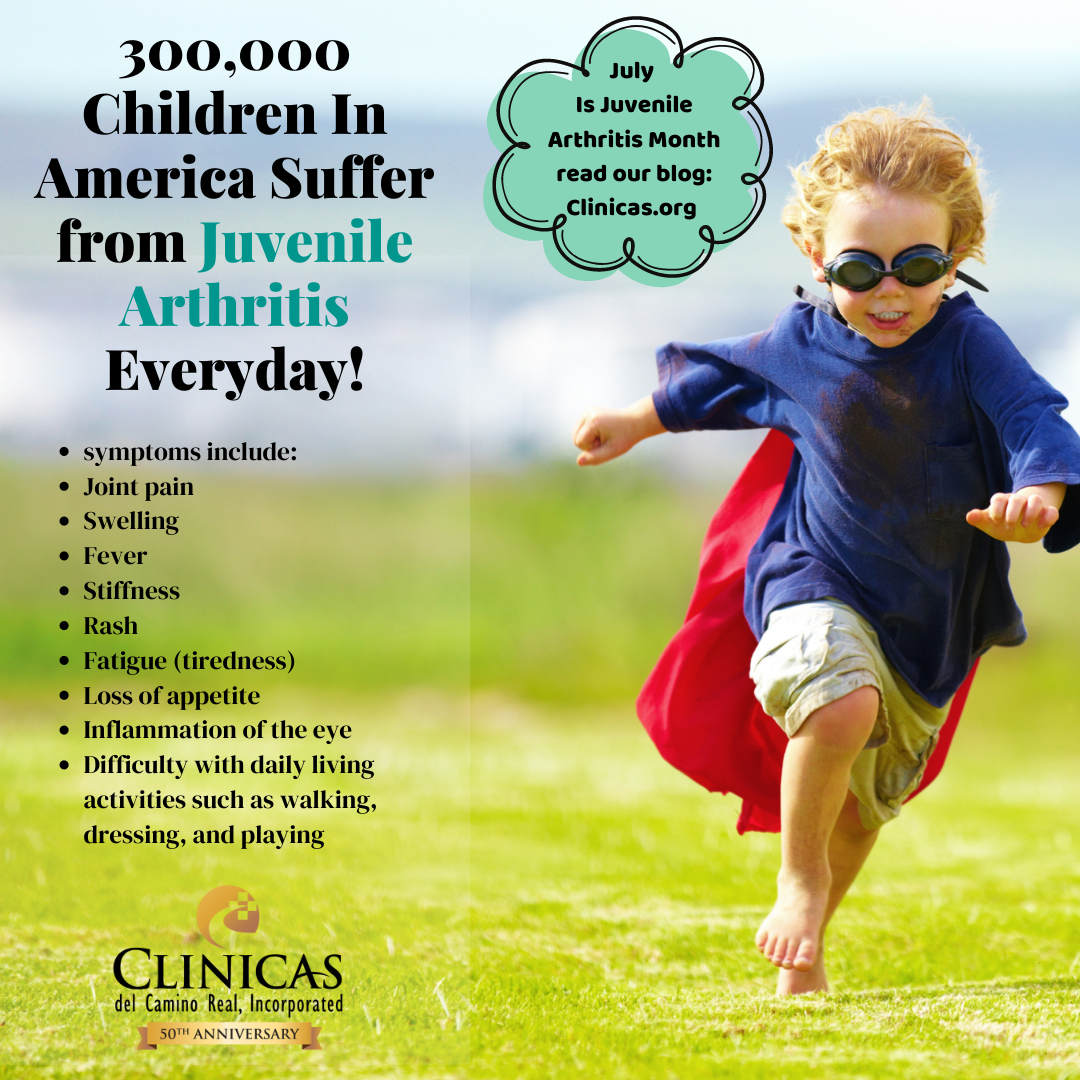
Did you know that Arthritis does not only affect the older generation but can affect children too? Close to 300,000 children have been diagnosed with juvenile arthritis (JIA) and it can appear in children as young as six months to children as old as 18 years of age. Young children do not fully form their immune system until 18 years old making arthritis an autoimmune disease. There are different names and types of JIA: Systemic JIA or Still’s disease, oligoarticular JIA that affects five or fewer joints, polyarticular JIA that affects five or more joints, enthesitis-related arthritis, and juvenile psoriatic arthritis.
Most Common Signs and Symptoms:
- Joint pain
- Swelling
- Fever
- Stiffness
- Rash
- Fatigue (tiredness)
- Loss of appetite
- Inflammation of the eye
- Difficulty with daily living activities such as walking, dressing, and playing
Signs and symptoms are often mistaken for more common illnesses such as the flu or an allergic reaction. JIA typically causes joint pain and inflammation in different parts of the body such as hands, knees, ankles, elbows, and wrists. The symptoms may get better for a time before coming back. Periods of inflammation and worsening symptoms are called flares. A flare can last for days or months. If untreated, these flares can cause damage to the lining of bones or bones themselves. Early aggressive treatment is key to getting the disease under control and preventing further effects. A medical history, physical examination, and blood tests help to make the correct diagnosis. Most children with symptoms are usually referred to a rheumatologist. According to the American College of Rheumatology (ACR), a child must have inflammation in one or more joints lasting at least six weeks, be under 16 years old, and have all other conditions ruled out before being diagnosed with JIA.
There is currently no cure for JIA, but remission (little or no disease activity or symptoms) is possible. Managing the disease and controlling inflammation can help prevent complications. Treatment will vary based on the severity and type of the disease and treatment plan with your health care provider.

